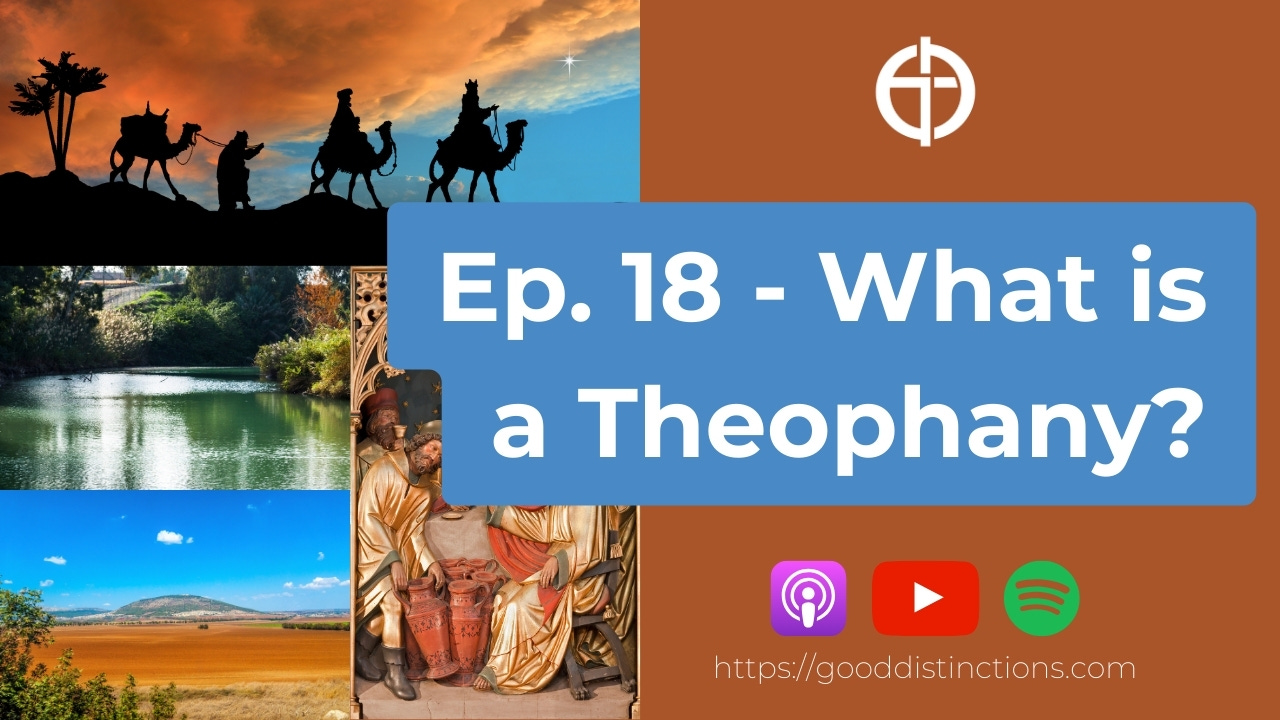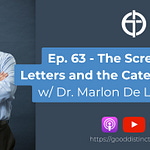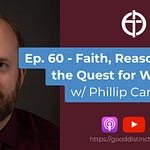Introduction:
The Catholic Church is about two thousand years old. Over those two millenia, different liturgical feasts have come and gone. There are two modern feast days in the Church today which are not well understood and which have an interesting history. That is what we will be looking at today! What is the Epiphany? And what is the Baptism of the Lord?
What is the Epiphany?
Epiphany comes to us from the Eastern Church where sources suggest that it is the same festival as Christmas (Christ’s Nativity). Some in the Early Church celebrated Christmas on January 6, but most celebrated it on December 25. The celebration of the magi being led by a star was also in the mix. What is really interesting though is what Epiphany came to mean. As I mentioned, some celebrated the birth of Jesus and there are discrepancies about what it was called. Some sources call it the Theophany. That’s a very interesting thing because St. Hippolytus writes about the eis ta hagia theophaneia (Greek: for the holy theophany) in reference to someone about to receive the Sacrament of Baptism. Others still, on January 6, commemorate the miracle of Jesus changing the water into wine at the wedding feast at Cana. Others attributed the feast of the Theophany as marking the Baptism of Jesus in the Jordan River. Still others marked it as a day to remember the Transfiguration of the Lord on Mount Tabor.
Today, the East tends to focus on the Baptism of the Lord in the Jordan on Epiphany and the West tends to concentrate on the mystery of the Magi. Another interesting link between the East and the West was the water blessed on this great feast. In the East (including Eastern Orthodoxy and Eastern Catholicism today), the service of Theophany includes the Great Blessing of Water. This inspired the blessing of Epiphany water in the West, which was adopted and included in the Roman Ritual in 1890. If you are interested in seeing the full text of this blessing, a parish of the Institute of Christ the King Sovereign Priest has a handy PDF.
There is also a blessing of the home that can be done by lay people. It utilizes chalk that has been blessed by the priest at the parish and then taken home. If a priest can be present, this is preferred, but is not always logistically possible in a large parish. At any rate, each room of the house is blessed with holy water and then the exterior doorway is marked with the blessed chalk. The prayer is:
“Blessed be this doorway. May all who come to our home this year rejoice to find Christ living among us as we welcome them with respect and kindness. May all our comings and goings be under the seal of God’s loving care. May we seek and serve, in everyone we meet, Jesus, Who is Lord forever and ever. Amen.”
Meanwhile, the door is inscribed with the chalk with the year and the letters C, M, and B, with crosses in between each part:
20 + C + M + B + 24
The first and last numbers are the current year, marking the entire year for Christ. The letters have two meanings. First, the C, M, and B, stand for the traditional names of the magi: Caspar, Melchior, and Balthasar. But it also stands for the Latin blessing: Christus Mansionem Benedicat (Latin: Christ, bless this house).
These long held and beloved devotionals and sacramentals of the Epiphany chalk and water give us a sense of how ancient this celebration is. In so doing, our houses become sacramentals and we show our love for the Lord. Unlike the violent and despicable King Herod, we welcome the Christ child into our home with open arms.
If you are really interested in the History of the feast and how it appears in various Missals and Sacramentaries, I would recommend the Catholic Encyclopedia article on New Advent entitled “Epiphany.”
So, what is the Epiphany / Theophany? An epiphany, in terms of definition, is a sudden realization. The Greek phainein means to cause to appear or show. Theophany is the combination of the word epiphany with the Greek word theos meaning God. So, a theophany is a sudden realization, or a better word might be manifestation, of God in glory. Rather than attempting to figure out what exactly we ought to mark this Epiphany, I think it would be fruitful to walk through the various moments in the life of Christ that have historically been associated with the Epiphany, these various theophanies.
Appearance of the Magi
In the Gospel of Matthew, we see the magi visiting the newborn Jesus in Bethlehem. Magi comes from the Greek word mangos which was associated with a priestly caste from Persia. These wise men were well versed in reading the meaning of the stars (astrology) and interpreting dreams. Astrology was something which all of the ancients paid attention to and while the stars do not influence the course of things as the ancients thought, God can still use them to signal major events. The position of the stars and planets coincided with the natural movements of the Earth and the seasons; so, reading the stars was a wealth of information for those who knew what they were looking at.
The Magi from the East were wealthy and possibly royal Gentiles and came to request an audience with King Herod. They had seen signs in the stars associated with Jupiter - the king of the planets - and came to meet this new king. Herod was taken aback by this news of a new king, as he had not recently fathered a baby son. The magi likely consulted with the scribes and chief priests and were pointed towards Behtlehem. In Micah 5:2, there is a clear indication that the Messiah would be born in Bethlehem.
This is where the Theophany comes in. The magi come before the newborn king: Jesus. They present him with gifts of gold, frankincense, and myrrh. Gold because He is a king. Frankincense because He is the priestly mediator between God and man. And myrrh because He would suffer and die for the sins of man. The magi reveals the glory of the Messiah, the God-man, who came into the world to save the Jews and the Gentiles alike. The presence of the Gentile dignitaries kneeling before the Christ child makes it clear that God is manifesting Himself to all the nations and not just the Jews. And the presents, the gifts, of these wise men manifest the reality of the God-man as priest, prophet, and king.
For more on the magi and what may have led them from the East, I warmly recommend the “Mysteries of the Magi” article on JimmyAkin.com.
Miracle at the Wedding Feast of Cana
On to the next Theophany: the Miracle at the Wedding Feast of Cana. Jesus reveals who He is and shows the power of God by working His first public miracle. The second Chapter of John’s Gospel recounts:
“On the third day there was a wedding at Cana in Galilee, and the mother of Jesus was there. Jesus also was invited to the wedding with his disciples. When the wine ran out, the mother of Jesus said to him, ‘They have no wine.’ And Jesus said to her, ‘Woman, what does this have to do with me? My hour has not yet come.’ His mother said to the servants, ‘Do whatever he tells you.’
Now there were six stone water jars there for the Jewish rites of purification, each holding twenty or thirty gallons. Jesus said to the servants, ‘Fill the jars with water.’ And they filled them up to the brim. And he said to them, ‘Now draw some out and take it to the master of the feast.’ So they took it. When the master of the feast tasted the water now become wine, and did not know where it came from (though the servants who had drawn the water knew), the master of the feast called the bridegroom and said to him, ‘Everyone serves the good wine first, and when people have drunk freely, then the poor wine. But you have kept the good wine until now.’ This, the first of his signs, Jesus did at Cana in Galilee, and manifested his glory. And his disciples believed in him.”
There is so much to say here! One thing that St. Augustine points out is that the Son, when He was with the Father, instituted marriage. And, yet, here He is coming to a wedding. (cf. Catena Aurea) What a gift that is, in and of itself.
One of the curious parts of this manifestation of God’s glory is when Jesus answers His mother saying: “Woman, what does this have to do with me? My hour has not yet come.” Of course, Jesus is never disrespectful to the Blessed Mother. The Church Fathers saw Jesus calling Mary “Woman” as a reference to her role as the New Eve, the Mother of all the living. The “hour” to which Jesus is referring is His death. He knew that He still had yet to call the disciples, proclaim the Kingdom, do miracles, declare His divinity in word and deed, and then show the humility of God in undergoing the daily sufferings of humanity. In obedience to His mother, He nonetheless worked His first public miracle, thus beginning the time of His hour. But as St. Augustine points out, our Lord claims the reality later in John’s Gospel that He has the power to lay His life down and the power to take it up again. (cf. Jn 10:18) So, it is not that His manifestation of divine power will start some sort of fated countdown - rather it was that He did not think it was expedient to show His power in this way.
As St. John Chrysostom points out: “Although He had said, Mine hour is not yet come, He afterwards did what His mother told Him, in order to shew plainly, that He was not under subjection to the hour.” (Catena Aurea) Yet, He also showed honor to His mother in performing the miracle. At any rate, this miracle was not a mere manipulation. It was not a magic trick or an illusion. Instead, as Alcuin of York put it: “He was the King of glory, and changed the elements because He was their Lord.” (ibid.)
There is much more that is revealed in this miracle. But this will suffice for now. Jesus is the Lord of heaven and earth. He is the Son of God. And in His first public miracle, we see a true Theophany. What should our response be? None other than what our Blessed Mother says: “Do whatever He tells you.”
Baptism of Jesus in the Jordan
The next Theophany is the Baptism of Jesus in the Jordan River. To prepare for the kingdom of Heaven, St. John the Baptist called people to repentance, to turn away from their sins. He did this by baptizing people in the Jordan River. This baptism was purely symbolic and not to be confused with the Sacrament of Baptism. People came from all Judea and all the region around the Jordan river to hear John preach. Even the Pharisees, Sadducees, and scribes came out to hear John preach, confess their sins, and be baptized. John’s was a voice crying in the desert to prepare the way of the Lord.
Of course, Jesus had no need of being baptized. He was sinless and is God. So, what is happening here? The Catechism does a beautiful job of explaining:
“The baptism of Jesus is on his part the acceptance and inauguration of his mission as God's suffering Servant. He allows himself to be numbered among sinners; he is already ‘the Lamb of God, who takes away the sin of the world.’ Already he is anticipating the ‘baptism’ of his bloody death. Already he is coming to ‘fulfill all righteousness, ‘that is, he is submitting himself entirely to his Father's will: out of love he consents to this baptism of death for the remission of our sins. The Father's voice responds to the Son's acceptance, proclaiming his entire delight in his Son. The Spirit whom Jesus possessed in fullness from his conception comes to ‘rest on him.’ Jesus will be the source of the Spirit for all mankind. At his baptism ‘the heavens were opened’ - the heavens that Adam's sin had closed - and the waters were sanctified by the descent of Jesus and the Spirit, a prelude to the new creation.” (CCC 536)
Pope Benedict XVI, in his book Jesus of Nazareth, points out the symbolism as well of Jesus entering into the waters of the Jordan River as He would one day enter into death and the tomb. And His rising from the water was like His Resurrection to come. We still hold to this theological reality in our own Sacrament of Baptism: we die with Christ and we rise with Christ a new creation.
Jesus’ public life begins when He is baptized by John in the Jordan River. We say that this is a Theophany because Jesus is revealed to be the Lamb of God by John: the Messiah of Israel and the Son of God. But more than that, when the baptism happens, the Holy Spirit, in the form of a dove, comes upon Jesus and the voice of the Father from Heaven proclaims: “This is my beloved Son.” Here, then, we have a full Theophany of all three Persons of the Blessed Trinity.
Transfiguration of the Lord
The final Theophany we will quickly review is the Transfiguration of the Lord. In St. Mark’s Gospel, we hear:
“And after six days Jesus took with him Peter and James and John, and led them up a high mountain by themselves. And he was transfigured before them, and his clothes became radiant, intensely white, as no one on earth could bleach them. And there appeared to them Elijah with Moses, and they were talking with Jesus. And Peter said to Jesus, ‘Rabbi, it is good that we are here. Let us make three tents, one for you and one for Moses and one for Elijah.’ For he did not know what to say, for they were terrified. And a cloud overshadowed them, and a voice came out of the cloud, ‘This is my beloved Son; listen to him.’ And suddenly, looking around, they no longer saw anyone with them but Jesus only.
And as they were coming down the mountain, he charged them to tell no one what they had seen, until the Son of Man had risen from the dead. So they kept the matter to themselves, questioning what this rising from the dead might mean. And they asked him, ‘Why do the scribes say that first Elijah must come?’ And he said to them, ‘Elijah does come first to restore all things. And how is it written of the Son of Man that he should suffer many things and be treated with contempt? But I tell you that Elijah has come, and they did to him whatever they pleased, as it is written of him.’” (Mk 9:2–13)
He revealed Himself first in a stable in Bethlehem, in lowly stature. God Almighty condescended to share in our humanity, the model of perfect humility. He revealed Himself at a wedding party, who is Himself the Bridegroom of the Church. He revealed Himself in the waters of the Jordan; He sanctified the waters of the world - a clearly meaningful gesture considering how important water is to us as humans.
Now, He reveals His glory on a lofty mountaintop. He did not transfigure His features because the Apostles still recognized Him but an ineffable brightness was added. He brings with Him two people: Moses and Elijah. Moses is the representative of the whole Law and Elijah represents all the Prophets. Jesus is the embodiment of the fulfillment of the Law and the Prophets.
As in each Theophany, the mission of Jesus is revealed. He is the Incarnate Word who came to redeem our fallen humanity. His “hour” begins with His first public miracle - the hour of His passion, death, and resurrection. The Baptism in the Jordan River reveals His public ministry and that He is the Messiah. Pope Benedict XVI reminds us, too, that:
“The mystery of the Transfiguration must not be separated from the context of the path Jesus is following. He is now decisively oriented to fulfilling his mission, knowing all too well that to arrive at the Resurrection he must pass through the Passion and death on the Cross. He had spoken openly of this to his disciples; but they did not understand, on the contrary they rejected this prospect because they were not reasoning in accordance with God, but in accordance with men (cf. Mt 16:23).” (Benedict XVI, Angelus, March 4, 2012)
The “folly of the Cross” is coming and Jesus wants to prepare Peter, James, and John to make their way the forested thickness of the passion and death. The light showing forth from Jesus on the mountain was not added from without; as God, He had the divine light within Him already. He was further revealing Himself to His closest friends. Besides the light, we also hear the voice of the Father echo the words from the Jordan River: “This is my beloved Son.” But He adds: “Listen to Him.”
What in the World is a Theophany?
So, what is a Theophany? It is a sudden manifestation of God in His glory, power, humility, truth, and grace. God reveals Himself and the mission of the Son to us throughout the Gospels. We must seek to place ourselves in these moments. In the Sacred Liturgy, in particular, we can do this by God’s grace. In the Mass, we step outside of space and time and the mundane in a mystical way. We enter into a foretaste of heavenly glory, but Jesus as our High Priest also makes present these past moments of majestic revelation afresh in the Holy Mass.
At the Epiphany, we are celebrating the arrival of the magi to adore the Christ child, and standing astounded with the chief steward of the feast at the wedding in Cana, and standing by the waters of the Jordan River seeing the Holy Spirit descend and the voice of the Father resound, and standing dazzled by the transfiguration of the Lord. It can be overwhelming to hold so many things in our mind at once. But thankfully, Holy Mother Church has given space to do so over the years. In the Latin Rite, we celebrate the Epiphany of the Lord on January 6 or the closest Sunday in the United States - in 2024, for example, it is on Sunday, January 7. In 1955, Pope Pius XII separated out Baptism of the Lord as a distinct feast. This was celebrated on January 13 for some time but is now kept as the first Sunday after Epiphany or, if Epiphany is celebrated on Sunday in a particular country, then Baptism of the Lord is celebrated on the Monday after. The Wedding Feast at Cana comes up in the Gospel readings on January 7 for daily Mass and on the Second Sunday in Ordinary Time in Year C. And the Transfiguration is celebrated on August 6, which allows us to remember the link to the other three theophanies half a year later.
Please Consider Donating
If you enjoy these episodes, if you've gotten anything out of Good Distinctions, if you enjoy the written articles that I put out and want to continue to see this channel grow, I need your help. It costs quite a bit of money to put this on. There's a lot of different software and equipment that it takes to make it happen well and properly. Please consider prayerfully donating. You can do so for as little as $5 a month or $50 for a yearly membership.
Special thanks to the following monthly and yearly subscribers of Good Distinctions!
Carson S.
Jo-Anne J.
Ann G.
If you’d like to support Good Distinctions and help it grow, please click the link below!












